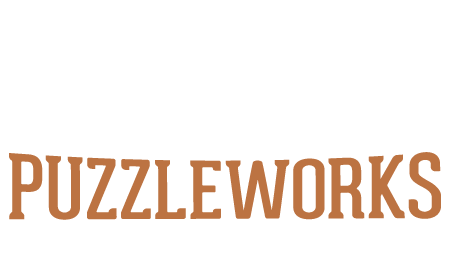Designing an escape room is both exciting and challenging. From floor plan to theme, there are a host of factors that should be considered before building commences. We've compiled the best advice for making the most of your design and included helpful tips about how to avoid obstacles down the road!
Tell a Tale
A strong story is a central element to any memorable escape room. A story adds an important layer to your theme, and it engages your customers on a personal level. What inspirations are behind your choice of theme? What makes your escape room specific? What sets it apart from others in your area? Trust your own taste to create unique twists in your narrative to make your room a one-of-a-kind!
Space Race
Maximizing space is very important. Don't start building until all options are considered for your floor plan. If you're building in a small space, think of ways that can help make your room feel bigger or more elaborate, such as adding mirrors or building a wall to split one room into two.
Swift and Streamline
Regardless of your room's dimensions, pace is an essential element to consider during the planning stages of an escape room. Avoid situations in your puzzle that require a whole team to be gathered around or crammed into a small space at the same time. These problems usually arise due to the lack of multiple clues spread around the room.
Most escape rooms have at least two clues or puzzles for a team to work on at any given point. Additionally, the best puzzles are designed to keep a team moving forward and rarely send them back to where they came. Bottlenecks usually occur for the same reason - too many people in a small space. Give your customers enough clues and space to spread out!
Versatility
Everyone loves a challenge, but some escape rooms can be overwhelming for a newcomer or simply too difficult for a younger (or older) client. While creating your room, it's smart to consider pieces and puzzles that can be adjusted depending on a team's age or skill level. The chances are that a group of eighth-graders is going to solve a puzzle differently than a group of corporate executives, but that doesn't mean they can't enjoy the same room. Think of at least three things that you can adjust to make your room both challenging and solvable for a variety of clients!
Start at the End
Reset time has a massive impact on the overall rotation of any escape room. The slickest gadgets and trap doors don't mean a thing if they can't be quickly reset for the next group of clients. Don't get caught up in the fun of creating an elaborate step-up without considering the time it will take to get it to reset. A good rule of thumb is to be able to reset a room within ten minutes. This means no big messes of confetti, liquid, or powder- you'll be thanking yourself later!
Durability
Naturally, it's important for your room to be detailed and eye-catching, but it's all for not if it is so delicate that it can't handle, well, being handled. With potentially over 100 hands touching props over the course of a busy day, it is very important that all objects can either take a beating or be easily replaced. Having doubles of unique props is a good idea, as well as keeping a toolbox somewhere nearby for any unforeseen issues. Investing in solid props will save you time and money in the long run.
Be Inspired
The best creators rigorously research their field. Visit the escape rooms in your area to see what the local market offers in terms of overall experience and price points. Successful escape room designers also love what they do. It is important that you enjoy the room that you're creating and to add your own personal sense of flash and style. Playing your favorite video games, board games, or even playing with blocks can inspire new ways of thinking about puzzles both in practical planning as well as theme and clues.
Mind and Body
Clients love variety. There's a different satisfaction when solving a cerebral problem, such as locating a specific place on a map, and a more dramatic problem, like a door popping open or a light, suddenly turning on. Whatever your taste, make sure you are balancing logic and movement in your clues.
There You Have It
We hope this list has offered a reminder that the early stages, while at times tedious, can be some of the most fun of the entire creative process. It's when a builder is truly the most free. We suggest designing a room that you would want to visit. Challenge yourself, always consider the client, and prepare on every level before the first hammer is swung. Good luck!

